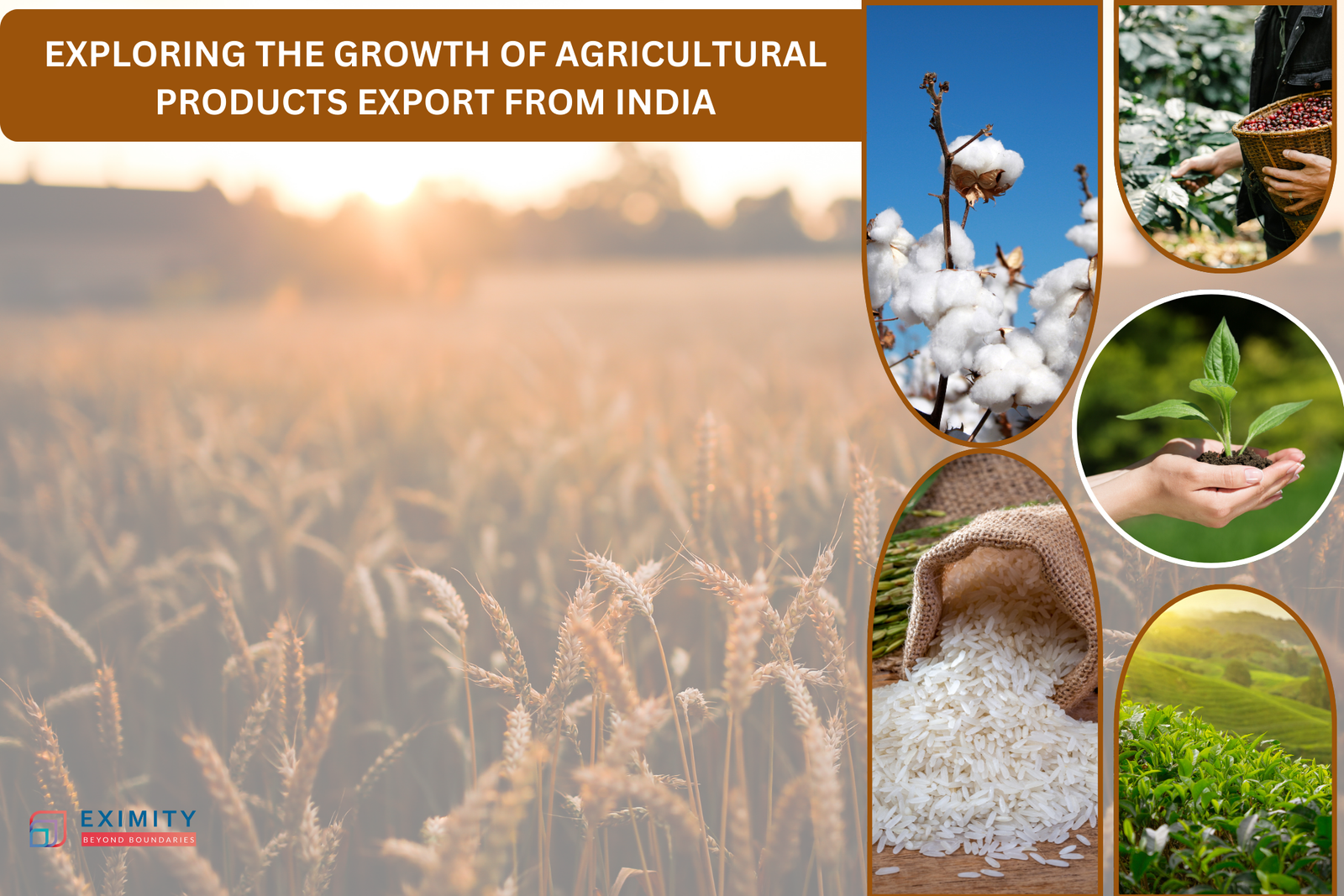Introduction
Place of India’s Agricultural Products Export in World Agriculture and Contribution of India’s Agricultural Exports to the Global Economy. The agricultural engagement of India in the world economy as well agriculture engagement qualifies in distinctive and significant transformation traits suggesting a huge potential capacity in agricultural products export from India. These exports are important not only for the economy of the country, but also to provide food to billions of people all over the globe, underscoring how the world is reliant on agriculture in India.
Overview of Indian Agricultural Products Export From India
India’s open secret includes a wide range of agricultural products from India which are marketed globally, including some of the Top Export Products from Gujarat. From the green expanses of rice fields in the East to the many types of spices that grow in the South, India’s colorful agricultural diversity is vividly witnessed. This position is also substantiated by Palmer, as volumes and values related to agricultural exports from India are quite impressive, with grains (rice, tea, spices) serving as prime examples.
Key Agricultural Products Exported from India
Coming to pillars of India’s agricultural trade, broad level agricultural products, which have been traded for centuries overseas, can be stated as the following;
Rice:
As a prominent food throughout the world, Indian basmati rice is among the most aromatic and sumptuous rice anywhere.
Spices:
India commands the spices trade and there is a collection of such spices that are the best within the borders of the country and in demand in other countries as the use of these is universal.
Tea:
Of special note, Indian Darjeeling and Assam tea is well known and appreciated in tea markets worldwide.
Cotton:
The fiber originating from India markets a major share in the global textile value chain, courtesy many of the regions in India suitable to grow such crops.
These products, along with some of the niche indian agriculture products such as organic herbs, and medicinal plants, have been further able to expand exponentially into quality conscious and sustainable markets, strengthening the goals of the effort for its sustainability.
Market Dynamics and Trends
The agriculture export India is determined by numerous international policy and domestic factors:
The market´s requirements of the enlarging population of the developing regions such as Africa, Southeast Asia offer some fresh opportunities.
Agri exports flows and successes are significantly dictated by the international trade policies and bilateral agreements within which the country finds itself requiring strategy and compliance as well as diplomacy.
Challenges in Agricultural Exports
However, looking at the export performance, it would be very simple to see a lot of export hurdles:
Logistics Issues:
The main factor in case of perishables is the in time and on place delivery of the goods.
Quality Issues:
The trust of customers is mandatory to be built on to quality and risk mitigants due to international aspect related diversification.
Environmental Issues:
Global warming creates a volatile situation affecting the production and the quality of the produce.
Government Programs and Support
The Indian government has taken many steps to help India export its agricultural products effectively, including:
Promoting modern agriculture through the provision of subsidies and other monetization services.
Market penetration campaigns which are inclusive of export promotion. Evaluating various initiatives by the government helps identify some of the means in which such barriers were overcome and global opportunities provided to the farmers.
Agricultural Development with Modern Technology
The adoption of technology has made a tremendous impact on the export of agricultural products in india:
Precision Farming:
The introduction of GPS technology and IoT has further allowed for enhanced agriculture, thus enabling more yields of better quality.
Biotechnology:
New crop gene by gene approaches resulting in stronger crops and better production output leading to more exportable crops.
Future Outlook of Agricultural Exports from India
Future projections look bright, with growth expected domestically and due to global factors as well as internal innovations in the sector:
It is likely that developing countries will drive this growth.
There is an expectation of an expanding market for sustainable and organic product lines and this is projected to have a global appeal aimed at an audience that is becoming health and eco-conscious.
The role of private and cooperative sectors
Private sector companies and cooperative societies play a vital part in enhancing agricultural export trade from India:
They provide the necessary capital, technology and know-how to manufacture goods, as well as, successfully capture a particular niche in the markets.
Successful examples of cooperative business systems in Gujarat and private business in Punjab show that these local systems can effectively make a geographic bridge towards reaching the international market.
Conclusion
Export of agricultural products from India is an important field, which not only brings revenue earning to the country but also significantly contributes towards ensuring the world’s food security. There is a need to bolster this sector in order to maintain economic development and strengthen India’s position among the leading agricultural products’ exporters in the world.
Get involved in the lively landscape that is Indian agriculture: its many products and opportunities. All interested parties are invited to participate in the creation of new forums and workshops aimed at the development and expansion of agricultural exports from India, promoting growth and development within the global market. Contact us to learn more and join the effort.
For an in-depth exploration of the trends and statistics in wheat exports from India, Read More about our comprehensive analysis here.

